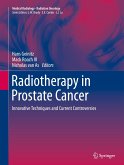Prostate brachytherapy has been the subject of heated debate among surgeons and the proponents of the various brachytherapy methods. This very first interdisciplinary book on the subject provides a comprehensive overview of innovations in low dose rate (LDR), high dose rate (HDR), and pulsed dose rate (PDR) interstitial brachytherapy for the management of local or locally advanced prostate cancer. In addition to detailed chapters on patient selection and the use of imaging in diagnostics, treatment guidance, and implantation control, background chapters are included on related medical physics issues such as treatment planning and quality assurance. The results obtained with the different treatment options and the difficult task of salvage treatment are fully discussed. All chapters have been written by internationally recognized experts who for more than a decade have formed the teaching staff responsible for the successful GEC-ESTRO/EAU Prostate Brachytherapy Teaching Course.
From the reviews:
"It gives a concise overview of the various techniques and equipment used in HDR, LDR and PDR treatments, and has a very good coverage of imaging for diagnosis and treatment planning, indicating how this will progress in the future. ... the clear style makes it suitable for students of any discipline, and the imaging chapters are good, but it is more suited to clinicians with only a token coverage of the physics involved ... ." (Keri Owen, SCOPE, Vol. 23 (1), March, 2014)
"It gives a concise overview of the various techniques and equipment used in HDR, LDR and PDR treatments, and has a very good coverage of imaging for diagnosis and treatment planning, indicating how this will progress in the future. ... the clear style makes it suitable for students of any discipline, and the imaging chapters are good, but it is more suited to clinicians with only a token coverage of the physics involved ... ." (Keri Owen, SCOPE, Vol. 23 (1), March, 2014)








